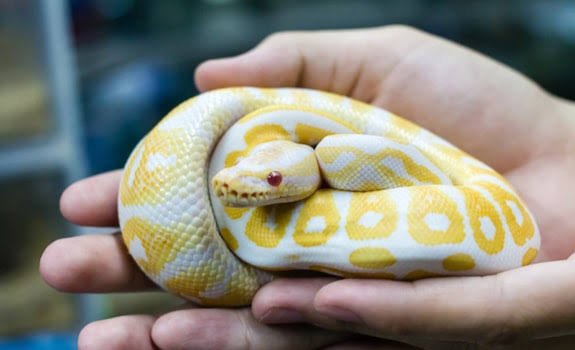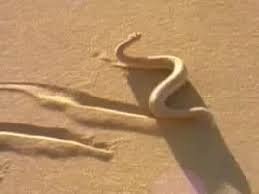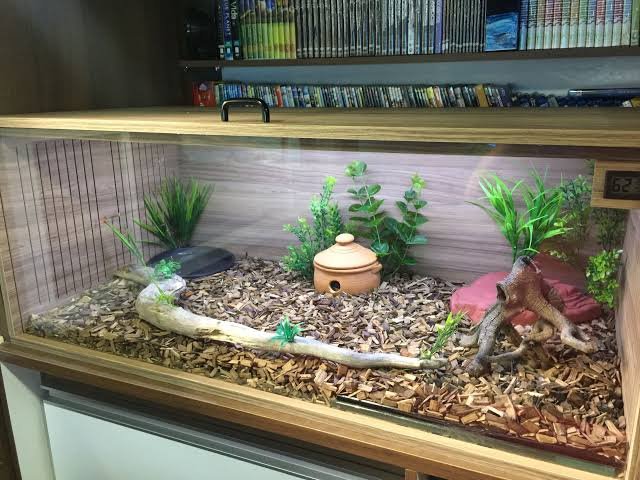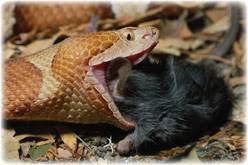OVERVIEW OF PET SNAKES, TYPES AND THEIR SUITABILITY TO THEIR KEEPER (PART 1) || BY @xkool24 ||
INTRODUCTION
There are approximately over 2900 snake species found and this makes it alot easier to choose and make the right selection as the affects keeping them as pets. This reptile family, also make good pets for their lovers. Snakes are mostly docile creatures, clean and odourless in nature, quiet and easy to care for. Maybe apart from python and Boas, others are feed less, hence this makes them cheaper to feed them.
All snakes are seen to be agile in nature and have similar body structure (shape) though they differ most times in sizes and temperament. Body sizes here are between 10cm to 30feet but most snakes used as pets are 5feet in length. As we know, the life span of a snake in the wide and captivity tend to vary. Those in captivity which are seen as pet can live for over 15years ( that's for the rat and king snakes, while boas and pythons stay as long as 20years.
It is important to note that the choice and type of snakes should be determined by the status of their handlers;(Beginners or Experiences). Snake Aggression and bite varies based on their species ( Some are seen to bite any opportunity, while some occasionally bite, others seldom or never bite). It is good as a beginner to make our choice of pet snake form those in the captive category as they are more docile and with better temperament. Examples are corn snake, king snake, garter snake, rat snake, milk snake and the ball python.
SNAKE CHARACTERISTICS
Snake comes in different colors and sizes, exhibits different temperament and habits. They are made up of four major parts; head, neck, body and tail. They cupiciously seen have lung(s),no gills, non movable eyelids and no external or visible ear openings.
Also is the retractile forked tongue used in picking up odors from the air and also serve as sense of taste.
They are limbless with scales with capacity to molt or shed it's skin between 2 - 5 times per year. Though it's you get species molts between 8 - 12 times yearly. Unlike most human pets, they are one man's pets that have longer life span. They have lifespan of up to 25 to 30years.
SNAKE MOVEMENT
Being limbless does not stop this reptile from achieving any task before it. They are seen to move in several ways but no snake can move backwards. They are seen to have rectilinear, serpentine and sidewindy movements.
Most limbless are seen to swim , and the snake species isn't and exception. They swim by flattening their tail and use it as a propeller. They can also climb, burrow and glide through the air. The Asian snake can glide through the air by flattening it's body.
SOCIAL BEHAVIORS OF SNAKES
One of the key Behaviour of snake is that they are generally solitary in nature for most of the year. They are most seen congregating during breeding season or during hibernation. Though there are non confirmed reports of some little known companionship behaviors. Some siblings of an adder species are seen together during all seasons, but this has not been confirmed for other species.
SNAKE HOUSING (CAGES)
This is basically what provides sense of security in keeping snakes as pets. This maybe due to its solitary nature. Understanding your pets characteristics will provide a better and suitable cage required for her existence. Providing an enclosure that is simple in design, secure, uncrowded, and that is easy to keep dry and clean.
Unlike what we see in pet cats and dogs, snakes don't play with toys. They are rather seen always resting, eat a little, and constantly moves around the environment to explore. Unsecure opening and holes should be mended while building their cages, since snakes are seen to be both strong and agile to avoid escaping from it. Most of them are best housed singly maybe due to its solitary nature and all great pets simply don't make good cage mates. This also helps in limiting the chances of transferring diseases.
CAGE HEATING AND LIGHTING
Lightening especially for non nocturnal species are important to avail them of day light. A duration of 10-12hrs light in a day makes them feel they are also close to nature. The use of artificial lights could be good idea for lightening especially the use of vitalites. With this you can gradually increase or decrease the number of hours of light in the spring, fall, and winter to simulate natural daylight.
On the other hand, snakes need substrate heating device to give them warmth when needed and also cool shade area to stay when too warm. Since they generate little or no internal heat or perspire, the need for warmth is inevitable. But we should note that extreme temperatures may either get them out of control or kill them.
SNAKE FOOD AND FEEDING
Snakes are carnivorous in nature, with a designed digestive system of accommodate whole animal/prey as a complete diet. These are Preys we all know and they include; frogs, rodents, fish, lizards, worms and sometimes they feed on fellow snakes. These are majorly their source of protein and basis for their feed composition. Snake feeds are also added vitamin supplements (calcium and vitamin D) to help balance their diet.
In feeding snakes, they can be fed live or frozen chicken (but make sure it's defrosted before serving) and adult rats/mice. But while feeding them with mice/rats caution has to be taken so as to avoid unnecessary attacks on the snake before consumption.
SNAKE BREEDING
this is a heneous task and requires keeping records and paying close attention to all details. They need to be in good condition and of breeding age. The ideal weather condition to bread is During winter so they can be hatched in summer.
Detecting sexes in snakes are not really difficult but at the same time can make mistakes. Females are larger with more weight in their lower body. All Snakes have have posterior opening called cloaca which are used for breeding and waste passage.
So before pet owners should prepare pet snakes for breeding, they should be able to feed them to gain weight for a period of 4months. After this period, they be kept in a cooling/hibernation state for about 3 months. After this 3 months, endeavor to start a warming period and again feed the snakes. Let's remember in all of this, temperature should be kept in a way it doesn't harm them.
WHERE TO FIND SNAKES
Sakes are generally not expensive, and can be bought from a pet shop, from breeders or from online.
Wild snakes when caught maybe difficult to breed or adapt to captivity,but bred snakes are not only expensive but also healthy. They also adapt easily to housing conditions than it's wild counterparts and also parasite free.
Thanks to everyone that would read through this post. More parts would be added and updated in my next post.
Cc:
@steemcurator01
@steemcurator02
@focusnow
@steemalive
@fur-friends
For more references and information on this article, kindly follow this source
.jpeg)
.jpeg)
.jpeg)
.jpeg)
Great article @xkool24. Keep on making great articles about pets and animals, free from plagiarism. We have submitted this post for support.
Thank you for the recognition and support thus far.
I've already pledged to be active in fur-friends Community, and so be.
Thanks again for coming through 👍